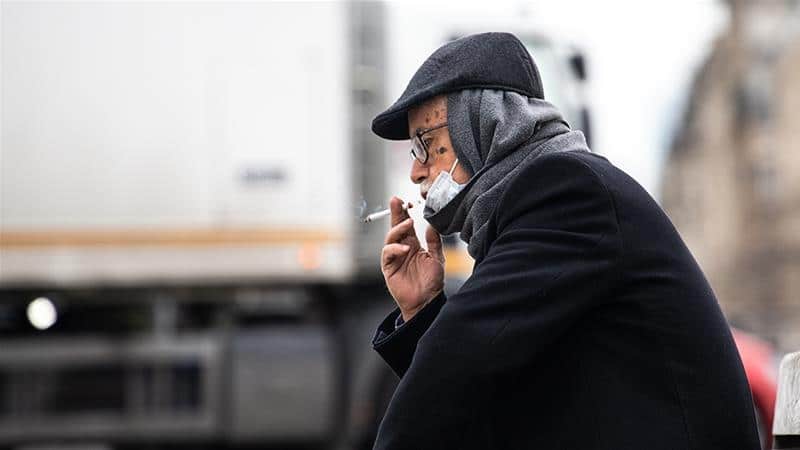COVID-19 is the novel coronavirus that has taken the world by storm. Smokers may be vulnerable to severe COVID-19 infections partly because their lungs are host to an abundance of entry points which the coronavirus can easily exploit.
COVID-19 infections are known to start at the ACE2 receptor, which is a protein present on the surface of all the cells available throughout the body, and that includes the upper and lower respiratory tracts.
Coronaviruses are of different types, and the type that causes COVID-19 is known as SARS-CoV-2. In the case of COVID-19, SARS-CoV-2 must first plug into a person’s ACE2 receptor in order for it to inject its genetic material into the existing cells, then it replicates and spread.
Now, preliminary studies are beginning to suggest that lungs that are repeatedly exposed to cigarette smoke will accumulate abnormally great numbers of ACE2 receptors, which is quite likely to leave the lungs vulnerable to damage as a result of the novel coronavirus.
More studies are beginning to show how smoking is linked to severe infections
Mounting evidence now suggests that, when compared with nonsmokers, individuals who smoke cigarettes are more vulnerable to developing severe complications and dying from COVID-19 infections.
For example, a study of more than 1,000 COVID-19 patients in China, which was published in the New England Journal of Medicine, revealed that smokers who were infected with COVID-19 stood a greater chance of needing intensive medical interventions than people who didn’t smoke.
According to data from the study, 12.3% of active smokers were admitted to an Intensive Care Unit, were placed on a ventilator or passed away, as compared with a small 4.7% of nonsmokers.
Active smokers may be especially vulnerable to COVID-19 for many reasons, but the ACE2 receptor hypothesis which we have stated above “provides a holistic, mechanistic link” between sever COVID-19 infection and smoking, Jaber Alqahtani, a Respiratory Medicine Researcher at The University College London, revealed to Live Science in an email.
Jaber added that If future research bolsters the connection between receptor quantity and disease severity, medications that reduce or block the sensitivity of ACE2 receptors may be considered as a potential treatment.
To further draw the connection between smoking and ACE2 receptors, Joan Smith, software engineer Sheltzer, and a member of Sheltzer’s lab carried out an examination of lung and respiratory tissue samples from dead rats, mice and humans, as well as some human samples collected during lung surgeries.
Her study showed no difference between the number of ACE2 receptors in the lungs of rodents of different sexes or ages, and the same trends were noticed in humans. As age and sex had proven to be unrelated to the quantity of ACE2, the researchers began to wonder if exposure to cigarette smoke might make any significant difference.
The research team inspected tissue samples collected from mice that had been exposed to some amount of diluted cigarette smoke for 0, 2, 3 or 4 hours every day over a five months period.
The discovered that, the more the rats were exposed to smoke, the more ACE2 receptors were noticed to have studded their lungs. When compared with mice that were unexposed, the lungs of mice that were exposed to the highest dose of cigarette smoke was noticed to have accumulated about 80% more of ACE2 receptors.
The next step was for the researchers to compared the lungs of active human smokers against those of humans who never smoked, and this time, a similar trend was found. The lungs of smokers contained 40% to 50% more ACE2 receptors than the lungs of nonsmokers.
The quantity of ACE2 receptors was noticed to vary by pack-years — a measure of the number of cigarette packs a person smoked every day multiplied by how many years the person smoked.
For instance, among smokers who had done a thoracic surgery, people who smoked above 80 pack on a yearly basis showed a 100% rise in ACE2 receptors when compared with those who smoked less than 20 packs per year.
While tissues that were exposed to smoke harboured a higher amount of ACE2 receptors, By checking out which proteins showed up in what cells, the team revealed that ACE2 were present on the cells that process both oxygen and carbon dioxide in the human lungs, called the alveolar type 2 cells.
But majorly, the receptors showed up on the cells that secrete a fluid with a mucus-like texture into the respiratory tracts, called the goblet and club cells. The researchers found that while nonsmokers have most of their goblet and club cells in their throat and nose, smokers have the cells accumulating in the lungs.
While it is slowly becoming a confirmed fact that smoking can pose more dangers to patients of COVID-19, there is still a need for public awareness on the subject.
We hope that this article has been helpful. Kindly leave a comment below.













